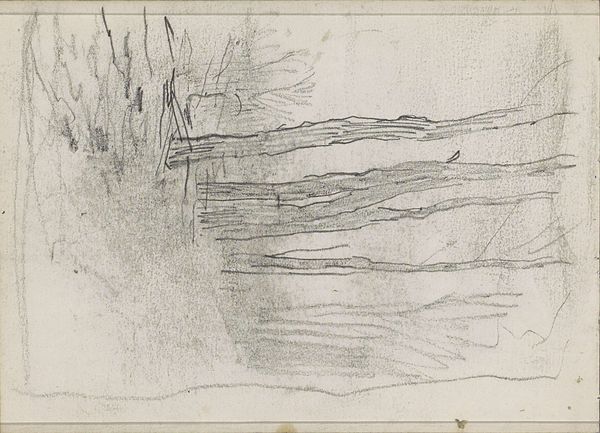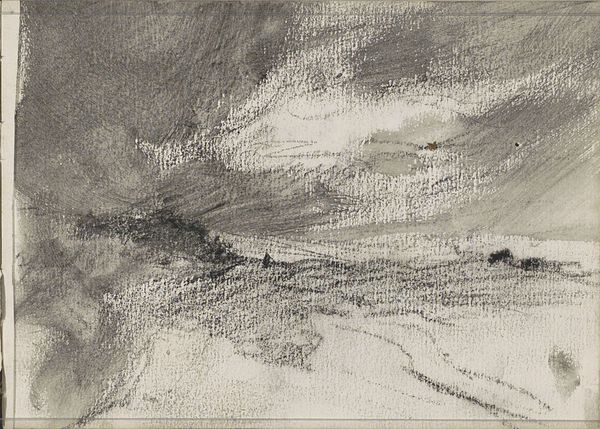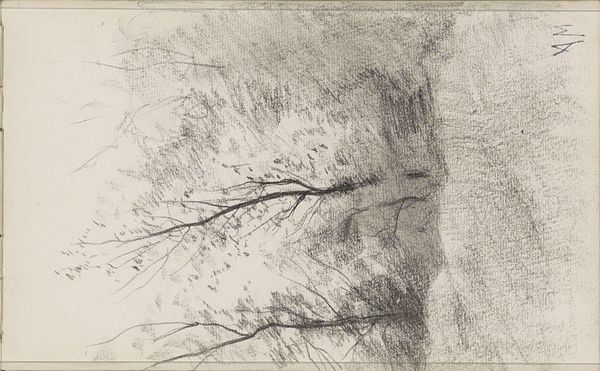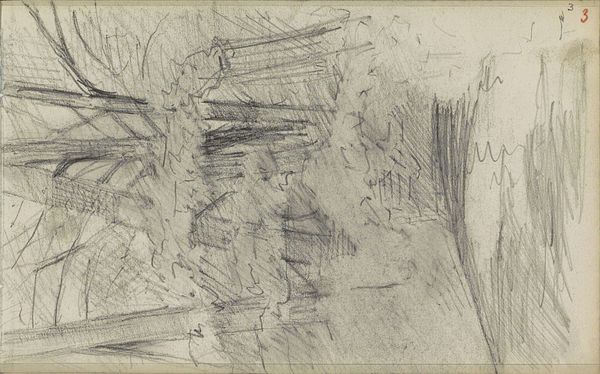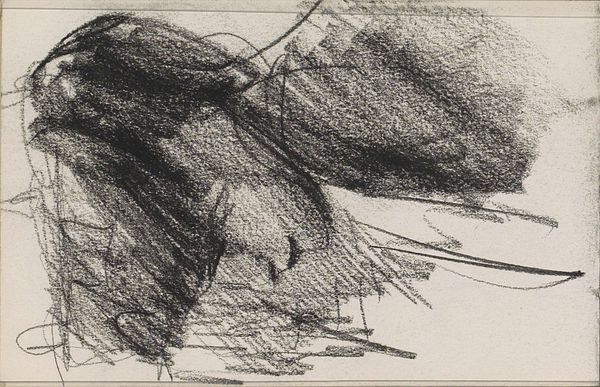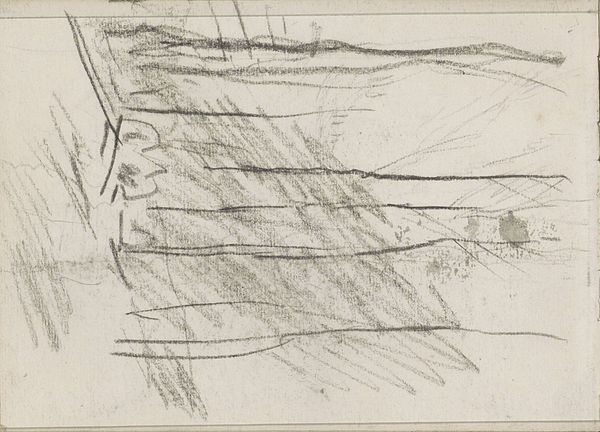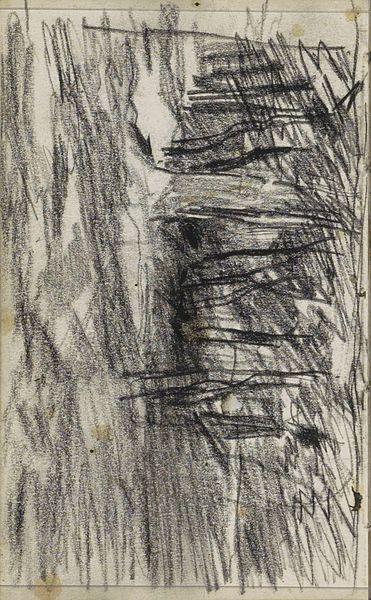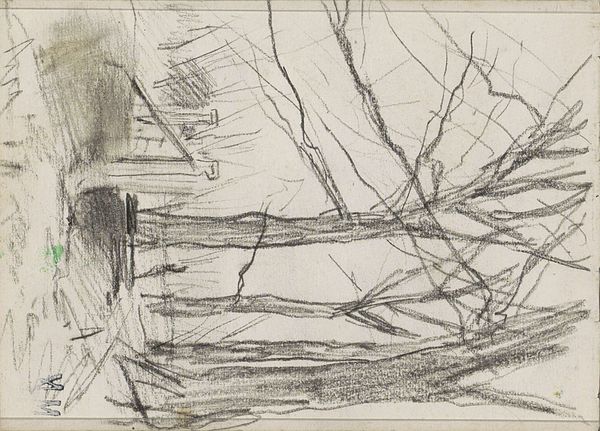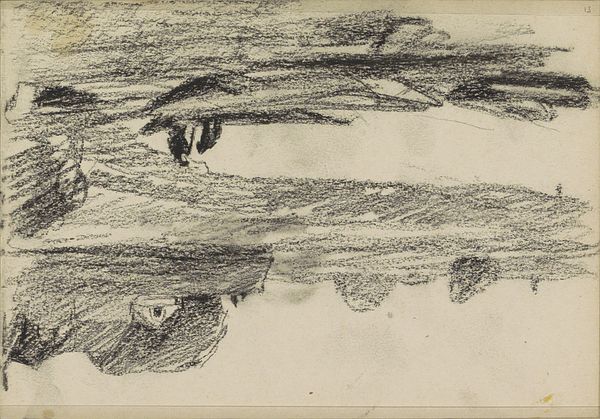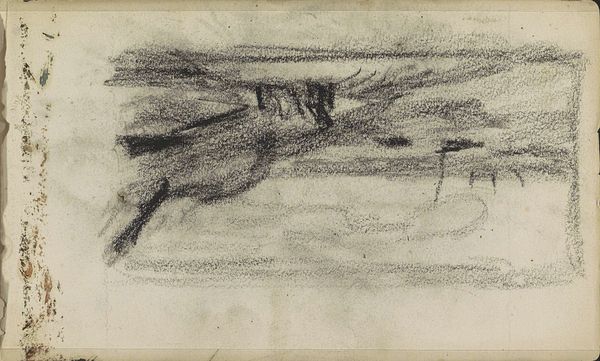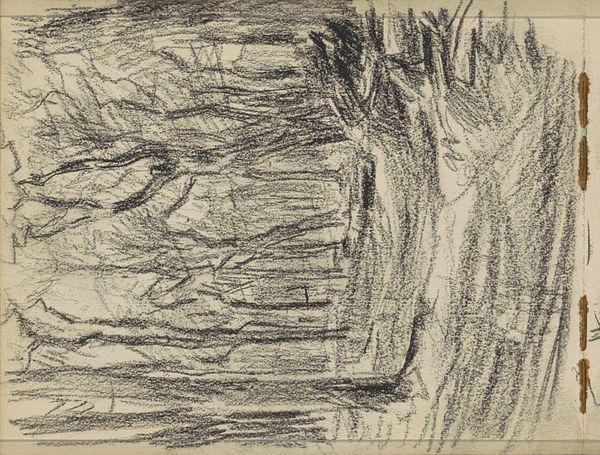
Copyright: Rijks Museum: Open Domain
Curator: Standing here, we have "Path through a Landscape," a pencil drawing created by Willem Witsen circa 1915-1920. It's currently housed right here at the Rijksmuseum. Editor: It feels unfinished, almost like a fleeting thought captured with rough, quick strokes. Somber and textural; it lacks precise detail but makes up for it with mood. Curator: Precisely! As a drawing made with pencil on paper, this artwork exemplifies Witsen’s Impressionist leanings. The blurred forms and strong contrast indicate an exploration of light effects, almost mirroring a photogravure, a technique he employed throughout his career. Think of the accessibility of pencil versus other, more exclusive or time-consuming, media like oils. Editor: I see your point about the materiality. Its ephemeral quality makes me consider the context it was made in, with a rise of mechanized labor happening across Europe and people starting to reflect on this. Landscape drawings have existed for centuries but why this view of one and this particular treatment during this particular moment in history? Curator: Exactly! You have to view Witsen’s landscapes as less of a true depiction of nature and more of a nostalgic longing for rural life at a time of massive urbanization in the Netherlands. While urban themes appear in his oeuvre, it is through his landscape works such as this one that we can glean some understanding of his views. The politics of depicting nature in this form become very clear. Editor: The interesting contrast and the lack of fine details draws me in because I imagine the artist’s labor. The process leaves the eye something to fill in, something to desire or create. We see the artist working here in some way. I find myself thinking about what art is meant to represent, and its value. Curator: And it is that value, in part, which determined its journey to hang here, for visitors just like us. Witsen’s stature in Amsterdam’s art scene in the late 19th and early 20th centuries is significant to the very nature of the image and why it's still shown and appreciated to this day. Editor: Indeed, there is much to unpack in its simple and unassuming beauty. Curator: Thank you for that lovely insight.
Comments
No comments
Be the first to comment and join the conversation on the ultimate creative platform.
